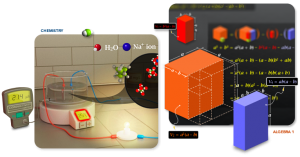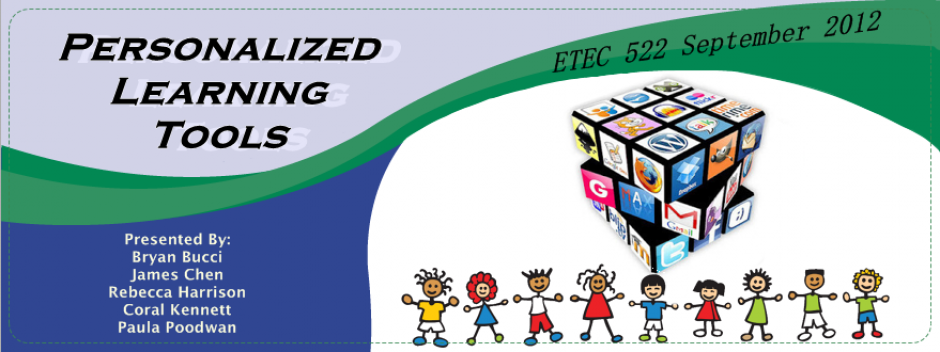New York City’s School of One is an innovative approach to personalized learning. In this model, the classroom is redesigned into open learning spaces and includes multiple modalities such as: live teacher-led lessons, software-based lessons, collaborative activities, virtual tutors, and individual practice. When students arrive at the school each day, they view their schedule on a monitor and then proceed to their assigned station. Instructor’s use learning algorithms to adjust learning plans for each individual student by analyzing data before and after class. This model serves students who are at different levels and who have different learning styles by addressing their individual learning needs.
The school named one of the top fifty inventions of 2009 in Time magazine. School of One was honored to receive a 2010 Heroes Award from Robin Hood. This video was produced for the award presentation:
http://www.edweek.org/dd/articles/2010/02/03/02customlearning.h03.html
Experiential Learning Initiative (E.L.I.) at Marie Sharpe Elementary in Williams Lake, British Columbia (SD No. 27)
Children learn better when engaged in hands-on activity according to Marie Sharpe elementary Principal Elaine Elliott. For one afternoon a week for 5 weeks, students in groups of 15 worked with a teacher, principal, or school counsellor on a hands-on learning project. The project allows students to focus on their strengths and give them control over their education by engaging in projects they are passionate about. Projects are a combination of science, language, math, and a physical skill building component.
Examples of elementary projects:
• In one class, students made cookies and breads from around the world, explored flags for each cookie’s country of origin, and looked up where that country is on the map.
• In the Snuggle up and Read Book Club they took trips to the city library, a book store and Tribune newspaper. They had opportunities to be read to and to read themselves. Community members came in to read to students, tell stories and do puppet plays. They also produced a video with each student talking about their favourite book.
• In other groups students sang, creating their own rhythms and beats to songs, made paper-mache dinosaurs and participated in dinosaur digs.
• In other classes the students also practiced and performed a short play; learned choreography and performed dance routines; created self-portraits; painted and framed art; made dream catchers and learned their history; learned about recycling.
http://www.bclocalnews.com/community/118401154.html
http://www.bcedplan.ca/happening_local.php
Vittra – International Schools in Sweden
Vittra schools believe that digital tools are helping to develop and transform teaching and learning and therefore the schools have “one-to-one” (one computer per one student) for students from grades 4 and up. The school has developed a unique educational model with individual action plans based on Knowledge, Personal Development and Learning.
Vittra Schools have nearly twenty years experience of working with Individual Development Plans (IDP), an invaluable tool for documenting and evaluating each student’s development and achievement. They call it the Vittra book, and all of their 8,500 students have their own Vittrabook which follows them throughout their schooling. Starting next year, Vittrabooks will be web-based to increase the opportunity for interaction between the home and school.
http://www.fastcodesign.com/1665867/school-without-walls-fosters-a-free-wheeling-theory-of-learning
Arizona State University – Knewton Math Readiness
ASU was strained by the large number of enrolled students who were not college-ready in mathematics, an area found to be a key predictor of university success. Persistence for students earning an A, B, or C in developmental math was more than 50% higher than those receiving a D, E, or W—underlining the high correlation between developmental math success and overall success. However, more than 30% of students failed to receive a C or higher in the course.
ASU developmental math students now use Knewton Math Readiness, an online course powered by the Knewton Adaptive Learning Platform™. The platform serves as a recommendation engine for learning. It continually assesses, remediates, and re-assesses student progress, providing each student with the exact piece of content needed to address individual proficiency gaps and ensure success in future courses.
After two semesters of use with over 2,000 developmental math students at ASU, withdrawal rates dropped by 56% and pass rates went from 64% to 75%. Forty-five percent of students finished the course four weeks early.
http://www.knewton.com/
http://www.forbes.com/sites/bruceupbin/2012/02/22/knewton-is-building-the-worlds-smartest-tutor/
Sundale Elementary School, Tulare, CA – Adaptive Curriculum Case Study
With an interactive whiteboard in every classroom and two computer labs on campus, Sundale Union has integrated technology into the curriculum from kindergarten on.
Adaptive Curriculum has more than 400 standards-based activity objects designed to use multimedia lessons to reinforce complex concepts. The software also has online teacher guides and lesson plans, and it provides instant feedback and reinforcement.

http://www.adaptivecurriculum.com/us/lessons-library/science-AO-introduction.html
Every Tuesday and Thursday, up to four or five Adaptive Curriculum centers are set up for small group projects, with students spending 15 minutes at each center and completing one Adaptive Curriculum Activity Object. For individualized, self-paced work, students go to the computer lab on Fridays, where they each complete one or two Adaptive Curriculum lessons.
It’s so easy to select different activities for different students and differentiate lessons based on skill-level pacing.
-Eric Garcia 6th-Grade Science Teacher
Student scores have improved steadily on the Adaptive Curriculum assessments. According to Mr. Garcia, “Initially my students were scoring only 20-40% correct on the built-in tests. They were skipping steps and trying to go through the program too quickly. But when they started to take notes and study the Adaptive Curriculum keywords, their scores went up to 80-100% correct.”
Activity Five: Discussion – Your Personalized Learning Experience
After you have looked at “Current Examples” showing classes that use Personalized Learning and which tools and activities they have been employing, it is now your turn to share your experiences with us.
Please tell us your experience of personalized learning and which tools and activities you have been using? Does it work? Is there any difficulty implementing it?
It could be from your own learning and teaching, or from what you have heard, or if you don’t have direct experience, feel free to select an example from the “Current Example” Page and share with us your thoughts on whether that practice will work, and why or why not? Do you see any difficulty they may have in implementing that type of personalized learning?

